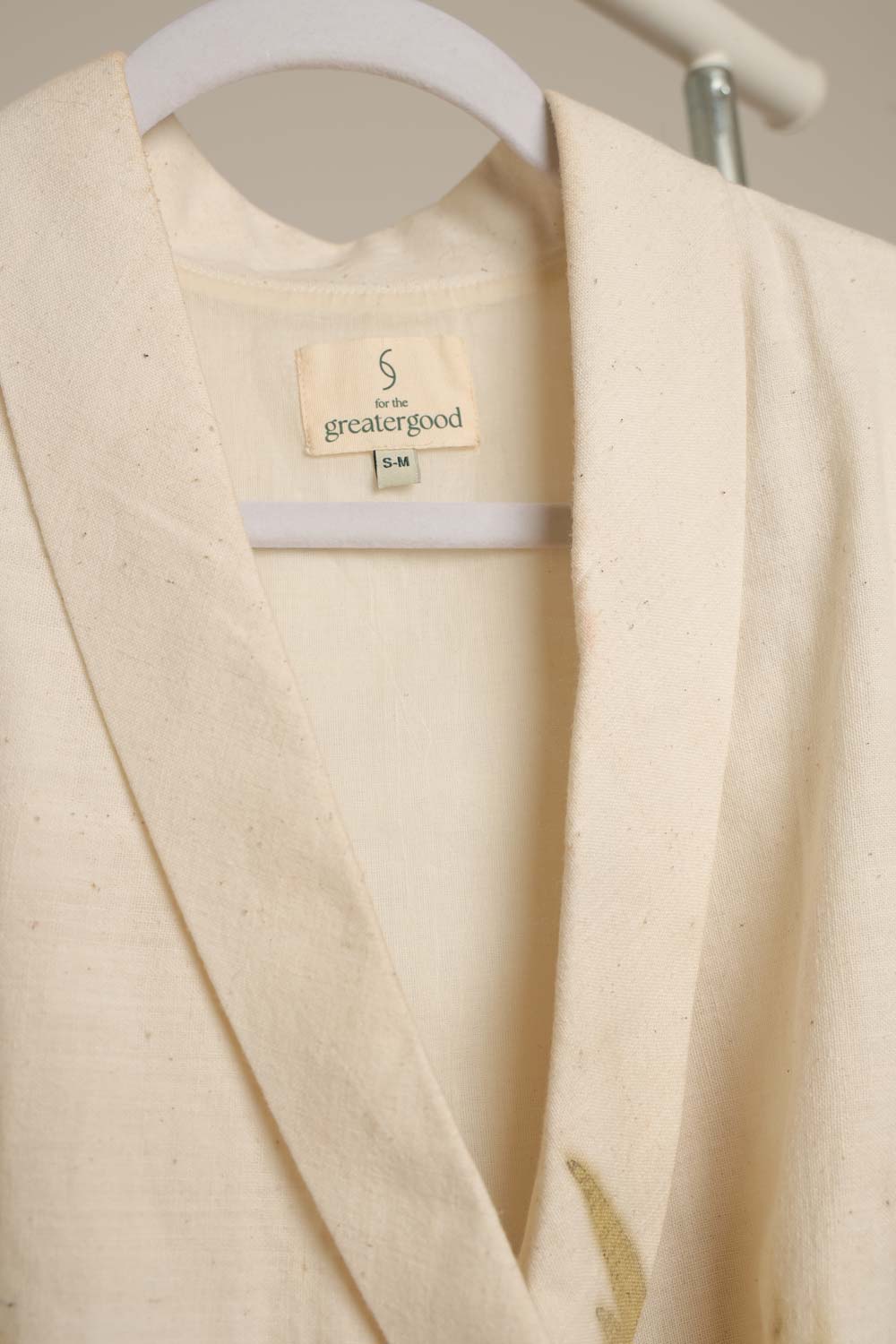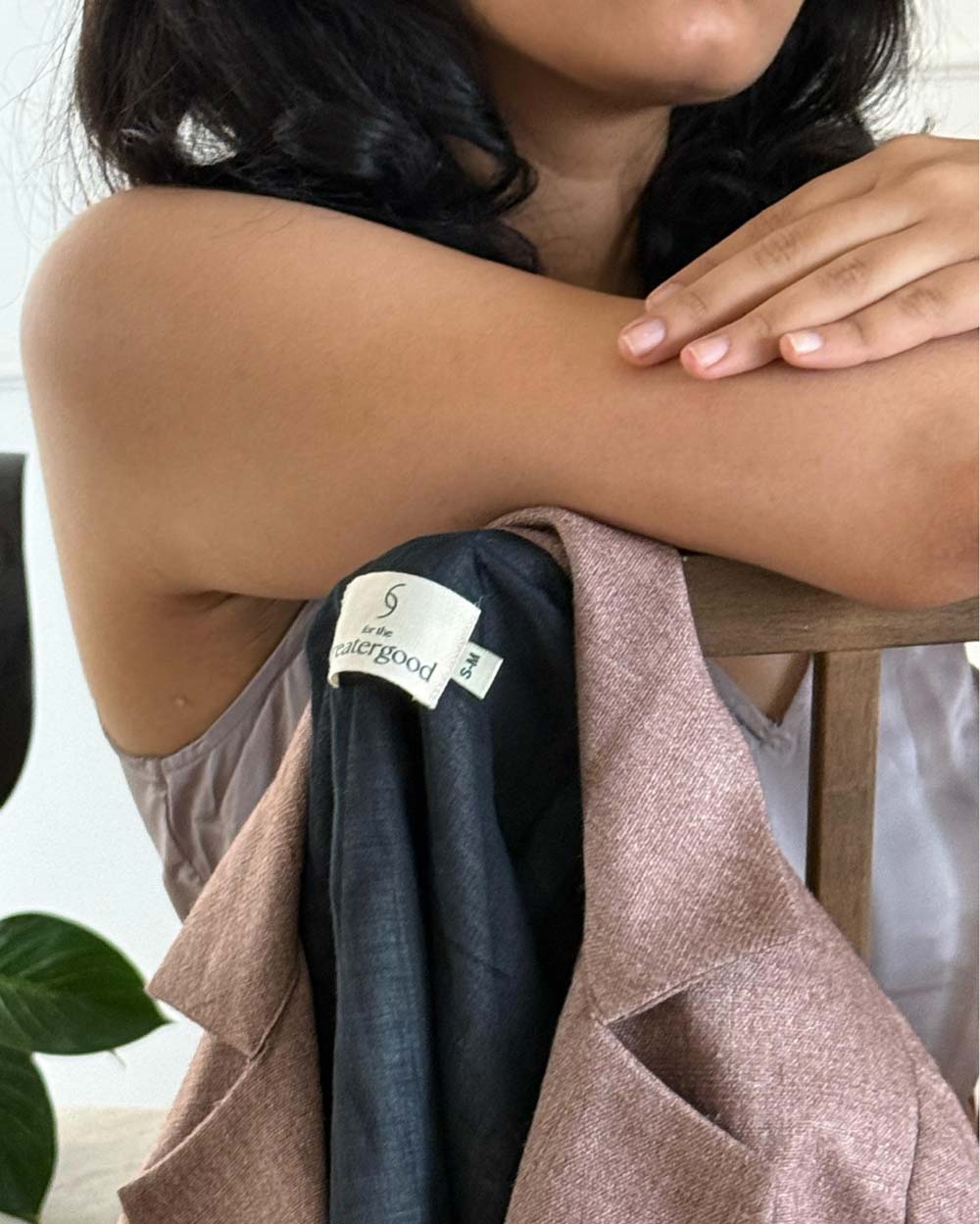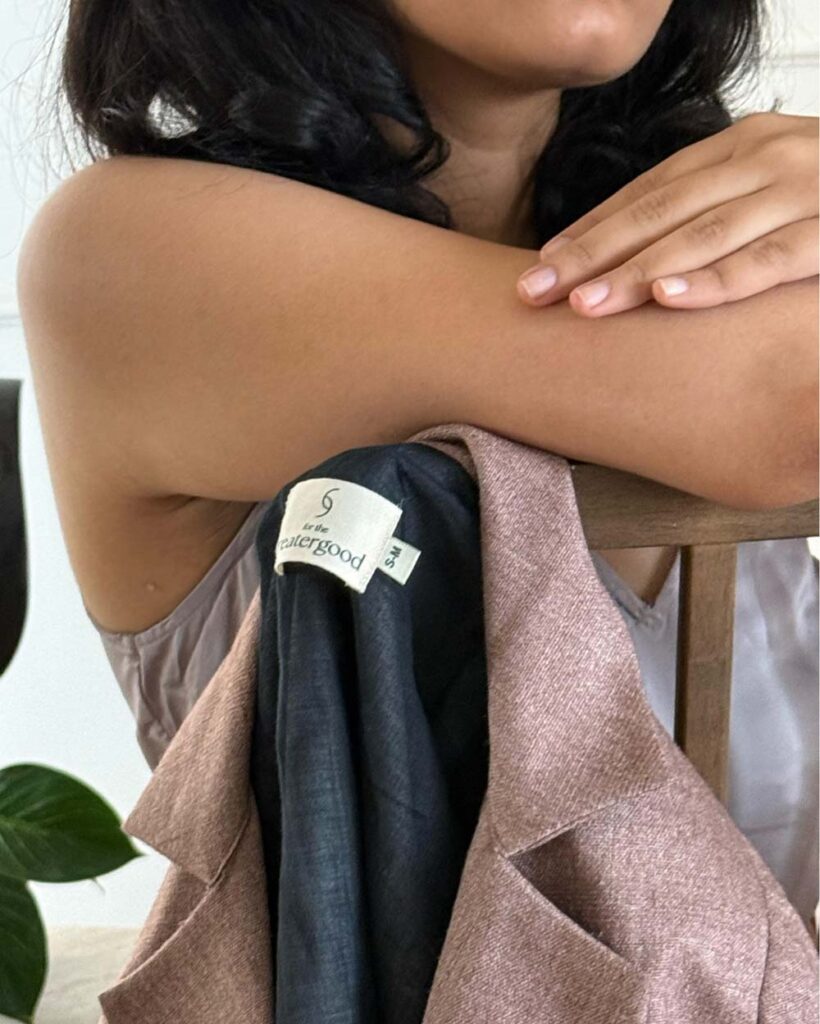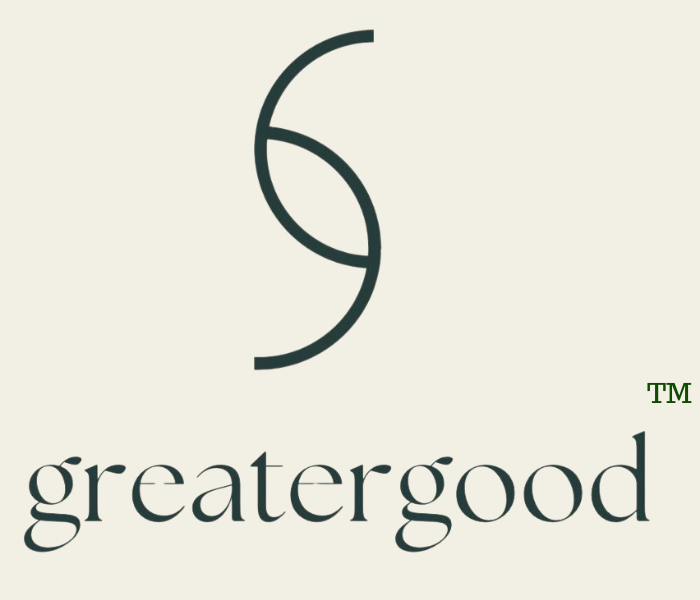Fabric & Dyes
FABRICS
Greatergood focuses heavily on clothing made from plant based fabrics.
Plant-based fabrics are textiles made entirely or partly from fibers that come from plants’ seeds, stems, leaves, or fruits, plant-based fibers are:
- Renewable Resources: Grown naturally and replenished seasonally.
- Lower Water Footprint: Certain crops like hemp and linen use significantly less water than cotton.
- Biodegradability: Natural fibers break down faster than synthetic materials.
- Reduced Carbon Emissions: Lower energy inputs compared to polyester or nylon production.
- No Microplastics: Unlike synthetics, plant-based fibers don’t shed harmful microplastics into waterways.
- Breathable : lightweight feel, moisture absorbable and a natural uv resistant
- Hypoallergenic: due to its natural properties it is safe on skin and is often hypoallergenic.


We follow sustainable and ethical practices from start to end of our process
Plant based fabrics require lesser water usage, no chemical fertilisers, maintains soil carbon, do not contribute to microfibre pollution, require lower dependence on fossil fuels and most importantly can be waste based.
Our fabrics are sourced locally from india following strict Sustainable Farming Practices
Our protein based fabrics are ahimsa free. Ahimsa” is a Sanskrit word meaning non-violence — the principle of not causing harm to any living being. They are made from animal-derived proteins (like silk, wool, or milk fibres) but without killing or harming animals during production.

Ahimsa or non-violent protein fabrics are made without harming animals, using:
- Ethical harvesting methods, allowing natural life cycles to complete.
- Lab-grown protein fibres that replicate animal protein at the molecular level.
- Regenerated or alternative natural sources (like plant-protein blends mimicking silk).
Soil health : Our farmers make use of organic and composting manure instead of synthetic pesticides or fertilizers. This results to more carbon stored in soil and less water evaporation
AZO FREE DYES
Azo-free dye refers to dyes that do not contain azo compounds which can release carcinogenic arylamines — harmful chemicals that can pose serious health and environmental risks.
Azo dyes are synthetic colorants commonly used in textile dyeing. They contain a chemical group called azo (-N=N-), which links aromatic compounds (ring structures). These dyes can create vibrant, long-lasting colors, but some can break down into amines that are:
- Carcinogenic
- Mutagenic
- Toxic to aquatic life
Banned arylamines include substances like benzidine, 4-aminobiphenyl, and 2-naphthylamine — all linked to bladder cancer.
Why Azo-Free Dyes Matter in Sustainable Clothing:
- Human Safety
Azo-free dyes don’t release toxic amines, making them safer for skin contact, especially in babywear, undergarments, and long-wear clothing. - Environmental Protection
During dyeing or disposal, azo dyes can contaminate water bodies, harming ecosystems. Azo-free alternatives reduce this pollution. - Compliance with Global Regulations
- The EU REACH regulation bans 22 specific azo dyes.
- Many countries (like Germany, India, and Japan) have strict laws for azo dye use.
At greatergood, azo-free dyeing is a non-negotiable for safety, compliance, and credibility. It’s not just a trend — it’s a responsible choice for people and the planet.


NATURAL DYES
Natural dyes are colorants derived from plants, minerals, insects, and other natural sources, and they are a key component of truly sustainable and traditional textile practices.
They come from:
- Plants: Indigo (blue), turmeric (yellow), madder root (red), pomegranate rind (brown/yellow)
- Insects: Cochineal (crimson/red)
- Minerals: Ochres (earthy tones)
They are typically non-toxic, biodegradable, and renewable, and have been used for thousands of years, especially in Indian handloom and artisanal traditions.
Sustainability Advantages of Natural Dyes
Biodegradable & Non-Toxic
Material processing: our factories use high efficiency motors and LEDs replacing fluorescent lights, maintaining all equipment regularly.
Transportation and logistics
All of greatergood’s fabric production and manufacturing is locally sourced and based in india, shortening the supply chain, cutting down on long-distance freight emissions
Sustainable materials
we make use of natural, recycled, or low-carbon fabrics and avoid fuel based synthetics.
Waste disposal and water treatment
Packaging : Our reusable cloth packing is made of Leftover fabrics from our factories and manufacturing processes to prevent them from going to the landfills.
Artisanal & Slow Fashion-Aligned
Often used in handloom, khadi, and craft-based clothing, natural dyeing supports heritage techniques and artisan livelihoods.
